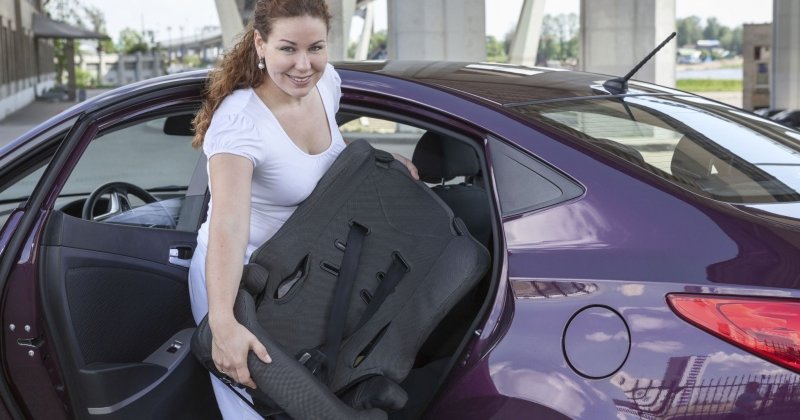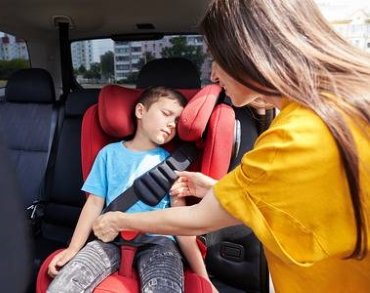The number of incorrectly installed car seats in vehicles around the world is startling. Take a look at some of the findings:

- In the U.S., 95 percent of infant car seats have at least one major installation error, according to the Journal of Pediatrics.
- In Australia, more than 70 percent of child car seats are improperly installed, surveys from Australian researchers found.
- In the U.K., nearly two-thirds of children are riding in car seats that are either installed incorrectly or not the right type for their age, says a What Car? study.
The news gets even worse. The mistakes made in car seat installation increase a child’s chances of being seriously injured while the vehicle is moving, let alone if an accident happened.
There is good news, however. Most incorrect car seat installations are easily fixable. But first, you have to recognize the mistake.
Common Car Seat Installation Errors
Mistakes can easily happen with a car seat install, even if you carefully read the manual as you go along. Some common mistakes, according to the National Highway Traffic Safety Administration (NHTSA) are:
- The car seat is not installed correctly in the back seat.
- The car’s seats straps are twisted.
- The recline angle of the car seat is not correct.
- The car seat’s harness is too loose.
- Lower anchors are attached too loosely or are used improperly, such as in the middle seat of the vehicle.
- The position of the car seat’s harness retainer clip is too low.
- The wrong harness slot is used.
- The seat belt retractor is not locked in car seats that use seat belts.
- The wrong seat belt path is used or not used at all.
- The car seat is not tight enough.
- The baby is not positioned correctly in the car seat, whether it’s an infant car seat, convertible car seat, or all-in-one car seat.
How to Correct Car Seat Installation Mistakes

When you consider a young child’s life is at stake, getting the installation of a car seat right is huge. It only takes one small mistake to put your baby at risk for serious injury.
When installing a car seat, your best bet is to follow the car seat’s instructional manual as you perform each step and heed the advice of safety experts.
In particular, the NHTSA car seat safety specialists emphasize these five important installation tips:
Tip #1: Perform the Car Seat Test
Once you’ve installed the car seat in the back seat of your vehicle, take a minute to test it to ensure it’s not too loose. A loose car seat can fling around when the vehicle is in motion and your child could suffer serious head and face injuries.
Additionally, if an accident happens, your little one would get the brunt of the forces of the crash instead of the car or car seat.
The car seat test is simple to perform in just five quick steps:
- Grip the base of the car seat where your vehicle’s seat belts pass through it with both hands.
- With a firm touch, try to move the car seat forward and back, then left to right.
- If the car seat moves in any direction more than an inch, you need to tighten it.
- Tighten the seat by placing your knee on the seat and pulling the seat belt as tight as you can.
- Lock the seat belt in place. For older vehicles without a seat belt lock, use a locking clip.
Tip #2: Do the Harness Check

This is a simple pinch test. Once your young one is in the car seat, pinch the fabric of the harness straps between your fingers. If you can pinch any extra material, the harness is too loose, putting your child at risk of falling out of the seat.
Keep tightening the harness until there is no slack in the straps and you can no longer pinch any extra material.
Tip #3: Check the Angle of the Car Seat
If your rear-facing car seat has a built-in indicator, be sure to use it when adjusting the angle of the seat. If an indicator is not built-in, you want to be sure the angle of your infant car seat is between 30 to 45 degrees, depending on the car seat manufacturer’s guidelines.
Here’s how to check the angle to ensure your baby’s airway is not restricted while in the car seat:
- Fold a piece of paper into a triangle.
- Place the longest edge of the triangle against the back of the car seat.
- If the edge is parallel to the ground, the angle is correct.
- If the edge is tilted too far forward or too far back, adjust the angle of the car seat accordingly.
Tip #4: Use the Right Slots
On the back of car seats are harness slot sets to keep the harness secure on your child in the event of a crash. The harness straps are threaded through these slots.
To make sure the harness straps are going through the right slots, follow the car seat manufacturer’s manual carefully, especially if you have a convertible car seat or an all-in-one car seat. With these types of seats, the slots where you put the harness differ from rear-facing to forward-facing.
Tip #5: Fix the Clip
Car seats feature a harness retainer clip, also called a chest clip. This clip holds the harness straps together and ensures they remain in place so your child is not ejected during a crash. Further, clips keep your baby from slumping down, which could lead to strangulation.
When your child is in the car seat, the retainer clip should be at armpit level, resting across your child’s breastbone. At this position, the shoulder straps will remain on your child’s shoulders where they belong and offer protection if an accident occurs by distributing the crash forces over the strongest areas of your child’s upper body.
A Foolproof Way to a Correctly Installed Car Seat
The best way to ensure a mistake-free car seat installation is to rely on the pros. Most communities have free car seat inspection services. Often times, they are located at your local police or fire department. These safety experts will double-check your installation or help you with the install.
As the saying goes, “Better safe than sorry.”
When 95% of car seats are installed incorrectly, it can’t be blamed on user error. The blame is with the car seat manufacturers who don’t consider this problem theirs to solve.
Ha! That’s such a legitimate point, all I can add is a slow clap, standing ovation.